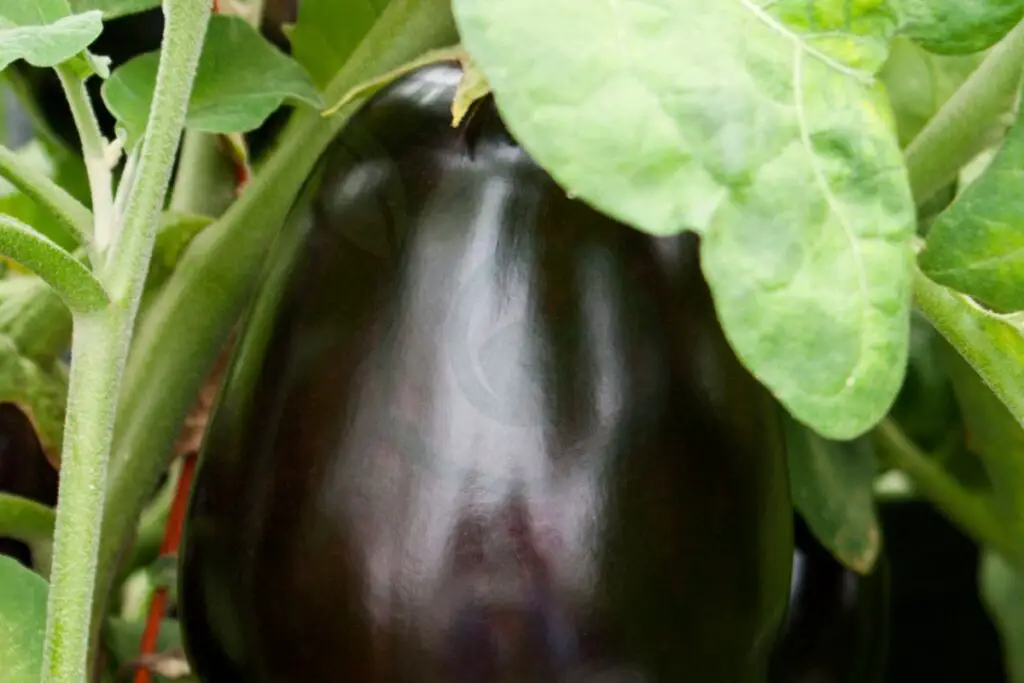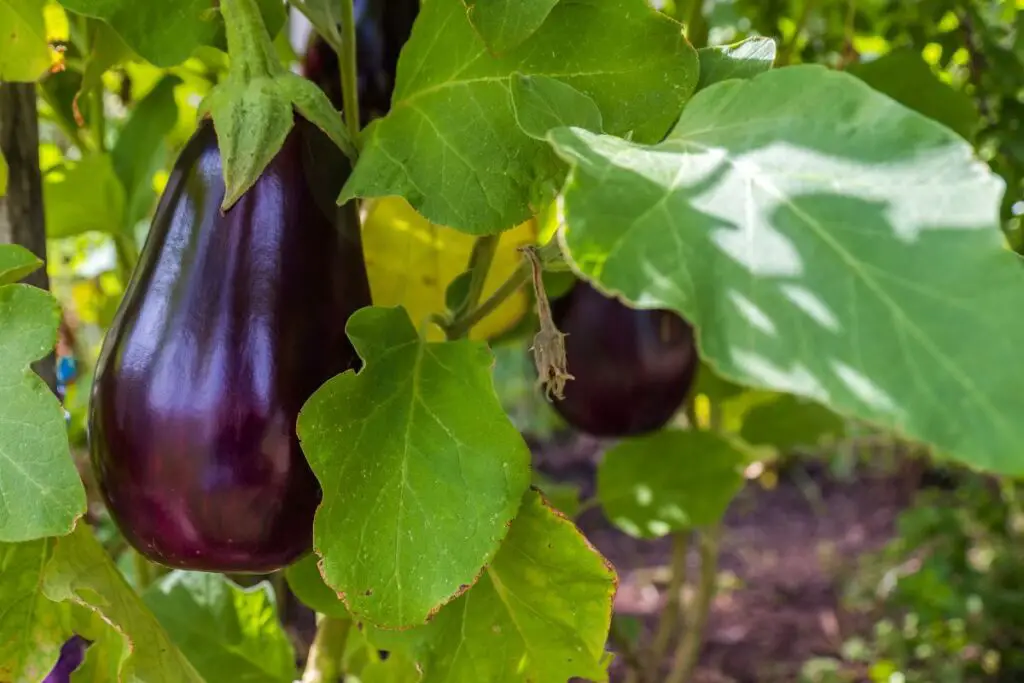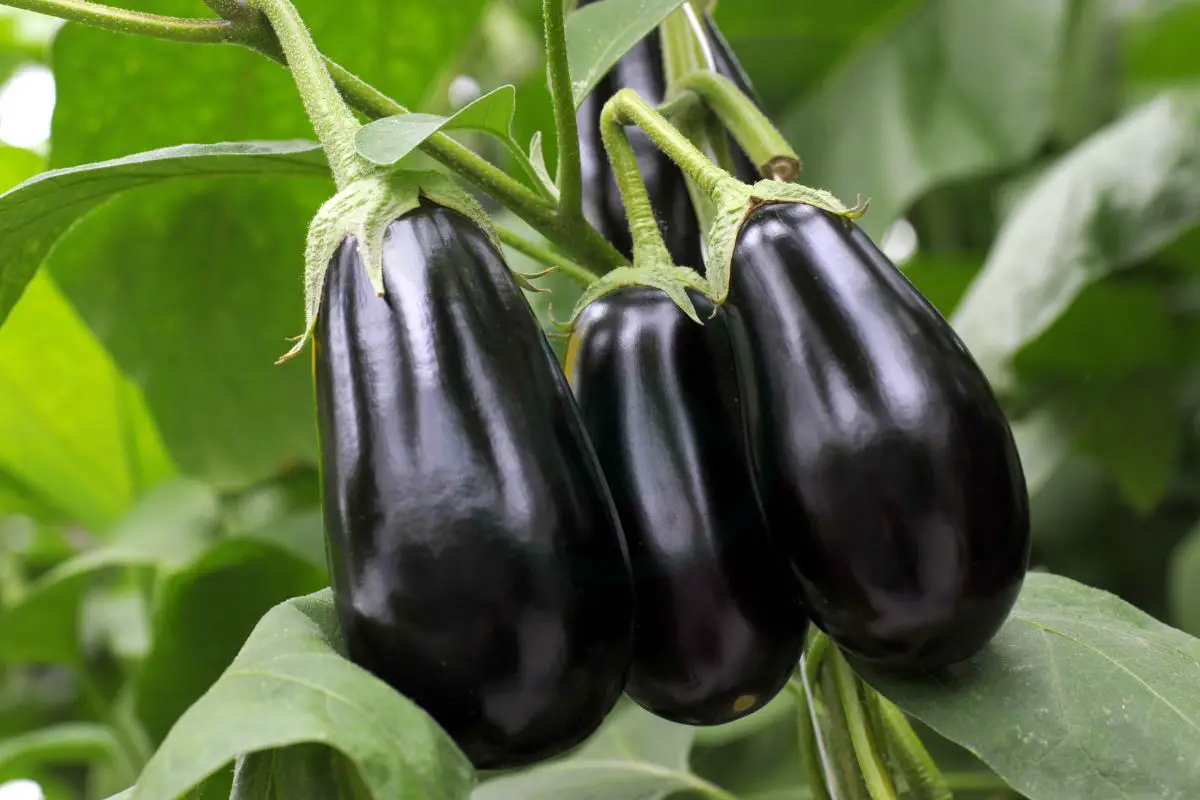Ever found yourself unsure about when the best time is to pick eggplants? We've got you covered with all the information you need to confidently choose the perfect eggplant for your next dish.
Wonder no more - we'll provide you with a step-by-step guide on how to determine the ideal moment to harvest your eggplants. From checking the color and firmness to considering the size and glossiness, we have all the tips and tricks you need for successful eggplant picking. Stay tuned for expert advice that will elevate your culinary skills and ensure you always select the freshest produce.
Key Takeaways
- Look for shiny and smooth skin on eggplants as visual indicators of ripeness.
- Gently press the eggplant to check for firmness, indicating maturity.
- Consider factors like size, color, and weight when assessing eggplant ripeness.
- Harvest eggplants when they are still young and glossy for the best flavor.
- Store freshly picked eggplants in a cool, dry place to maintain freshness.
- Extend the freshness of eggplants by storing them away from moisture and direct sunlight.
Understanding Eggplants
Growth Cycle
Eggplants go through several growth stages before reaching maturity. From planting to harvest, the process can take anywhere from 70 to 85 days. The optimal time for harvesting eggplants is when they reach full size and have a glossy appearance.
The growth stages of eggplants include seed germination, seedling growth, flowering, fruit development, and maturity. Understanding these stages helps in determining the right time to pick eggplants. Harvesting too early can result in underdeveloped fruits, while waiting too long can lead to overripe ones.
The best time to harvest eggplants is when they are still firm and have a vibrant color. Picking them at this stage ensures optimal taste and texture. Overripe eggplants may have a bitter taste and tough skin, affecting their overall quality.
Variety Differences
There are various types of eggplant varieties available, each with its unique characteristics and flavors. Common varieties include Black Beauty, Japanese Eggplant, Italian Eggplant, and Graffiti Eggplant. These different types impact the harvesting times due to variations in size, shape, and color.
Black Beauty eggplants are large and dark purple with a smooth skin, ideal for grilling or roasting. Japanese Eggplants are slender with a deep purple color, perfect for stir-fries or tempura. Italian Eggplants are elongated with a mild flavor suitable for dishes like Eggplant Parmesan.
Each eggplant variety has distinct features that influence how they should be harvested. Understanding these differences helps in selecting the right variety based on personal preferences and culinary needs.
Ripening Process
Eggplants naturally ripen on the plant before being harvested. Ripe eggplants have a shiny skin and give slightly when pressed gently with a finger. Harvesting underripe eggplants can lead to bitterness in taste, while overripe ones may be mushy and less flavorful.
It is essential to observe the signs of ripeness carefully before picking eggplants from the plant. A ripe eggplant should feel firm yet slightly yielding to touch without any soft spots or wrinkles on the skin. Harvesting at the correct ripeness ensures the best flavor and texture for your culinary creations.
Visual Indicators of Ripeness

Color Check
Eggplant color is crucial in determining ripeness as it shifts from green to shades of purple. This change signifies the fruit's readiness for harvest. The deeper the purple hue, the riper and sweeter the eggplant will be. Ripe eggplants have a glossy sheen and vibrant color, indicating optimal flavor and texture.
Size Matters
The size of an eggplant plays a significant role in its readiness for picking. Optimal size ensures ideal taste and quality. Smaller eggplants tend to be less bitter and have fewer seeds, making them preferable for culinary use. When selecting eggplants, choose ones that are firm, medium-sized, and free from blemishes for the best flavor.
Skin Glossiness
Glossy skin is a key indicator of ripe eggplants. The shiny surface reflects maturity and freshness, hinting at a flavorful interior. Dull or wrinkled skin may indicate overripeness or poor quality. When harvesting eggplants, prioritize those with smooth, glossy skin for superior taste and texture.
Tactile Indicators
Firmness Test
Eggplant firmness is key in determining harvest readiness. Gently squeeze the eggplant to assess firmness. The fruit should feel firm but not rock hard, indicating it's ready for picking.
When eggplants reach the ideal firmness, they are at their peak flavor and texture. Overripe eggplants may taste bitter or have a spongy texture. By mastering the firmness test, you can ensure a flavorful harvest.
Weight Assessment
Weight serves as a crucial indicator of eggplant ripeness. Heavier eggplants generally contain more water and are therefore riper. Lighter eggplants might lack maturity and flavor.
The weight of an eggplant can also reflect its quality. Optimal weight signifies a well-developed fruit with rich flavors. Lighter eggplants may disappoint in taste due to underdevelopment.
Assessing Ripeness Factors
Weather Influence
Weather conditions play a crucial role in the growth and ripening of eggplants. Temperature directly impacts how quickly eggplants mature, with warmer temperatures speeding up the process. Humidity levels affect overall plant health and fruit development, influencing the taste and texture of the eggplants. Adjusting harvesting times based on weather patterns ensures optimal flavor and quality.
Soil Conditions
l quality is essential for cultivating healthy and flavorful eggplants. The type of soil directly impacts the plant's nutrient intake, affecting its overall growth and development. Poor soil conditions can lead to stunted growth and bland-tasting eggplants. Optimal soil requirements include well-draining soil rich in organic matter to support robust plant growth.
Watering Impact
Watering plays a significant role in the growth and ripening of eggplants. Proper watering schedules are crucial for maintaining healthy plants and ensuring optimal fruit production. Over-watering can lead to root rot, while under-watering can result in poor fruit development. Balancing water levels is key to producing flavorful and high-quality harvested eggplants.
Harvesting Techniques
Cutting Method
Proper cutting technique is essential for harvesting eggplants efficiently. Cut at the right angle to prevent damage and ensure a longer shelf life for the harvested eggplants. The cutting method directly impacts the quality of the produce.
Handling Care
Gentle handling is crucial when harvesting eggplants to avoid bruising and damage. Preventing physical harm during picking ensures that the eggplants remain in optimal condition. Safely transporting freshly harvested eggplants requires following best practices.
Peak Freshness Timing

Seasonal Timing
Eggplants thrive in warm weather, making summer the prime season for harvesting. During this time, eggplants boast peak flavor and texture. The summer sun enhances the taste of eggplants, providing a rich and savory experience.
In contrast, winter brings cooler temperatures that can impact the quality of harvested eggplants. They may lack the same depth of flavor found during the warmer months. It's crucial to consider seasonal variations when deciding on the best time to pick eggplants for optimal taste.
Daily Peak Hours
The ideal time to harvest eggplants is in the early morning or late afternoon when temperatures are cooler. Morning harvests ensure that eggplants retain moisture and freshness. Harvesting later in the day allows flavors to develop fully before evening meals.
Harvesting during midday can expose eggplants to intense heat, affecting their taste and texture negatively. By scheduling your harvest during peak hours, you can guarantee maximum freshness and flavor in every bite.
Storing Freshly Picked Eggplants
Temperature Control
Maintaining the right temperature is crucial for storing freshly harvested eggplants. Fluctuations in temperature can impact the ripening process, affecting the quality of the eggplants. The optimal temperature range for storing freshly picked eggplants is between 45 to 50 degrees Fahrenheit.
Understanding how temperature influences the ripening process of eggplants is essential. Cooler temperatures slow down the ripening process, helping to preserve the freshness and flavor of the eggplants for a longer period. On the other hand, warmer temperatures can lead to quicker ripening and potential spoilage.
To ensure the longevity of your home-picked eggplants, it's vital to store them in an environment with controlled temperature. This will help maintain their crispness and taste, allowing you to enjoy them at their peak freshness for an extended time.
Humidity Levels
Humidity levels play a significant role in preserving harvested eggplants. Humidity directly impacts the texture and shelf life of eggplants. High humidity levels can cause moisture buildup, leading to a mushy texture and faster spoilage, while low humidity levels can result in wilting and shriveling.
Understanding the ideal humidity conditions for storing home-picked eggplants is crucial. The recommended humidity level for preserving eggplants ranges between 85% to 90%. This range helps maintain the right amount of moisture around the eggplants, keeping them fresh and flavorful.
The Best Place to Store Eggplant
Fridge vs. Counter
When storing eggplants, the fridge can extend their freshness but may cause chilling injury if below 50°F. On the other hand, keeping them on the counter at room temperature around 50-54°F helps maintain flavor.
Consider the impact of storage location on the freshness and quality of eggplants. The fridge slows ripening, ideal for long-term storage, while the counter is best for immediate use.
To prolong the shelf life of home-picked eggplants, opt for storing them in a cool place like the fridge or a cellar with proper ventilation.
Container Types
Explore various container options for storing harvested eggplants such as perforated plastic bags or open containers. These options help regulate moisture levels and prevent premature spoilage.
Different container types affect air circulation and moisture levels crucial for preserving eggplants. Opt for containers that allow some airflow but retain humidity to keep them fresh longer.
For optimal preservation, choose containers like breathable produce bags or perforated plastic bags that strike a balance between airflow and moisture retention.
Extending Freshness
Wrapping Techniques
Effective wrapping techniques are crucial for maintaining freshness and preventing spoilage of home-picked eggplants. Wrap the eggplants in a paper towel before placing them in a perforated plastic bag. This method helps absorb excess moisture and prevents premature rotting.
To maintain optimal freshness, store the wrapped eggplants in the crisper drawer of the refrigerator. Avoid washing the eggplants before storage as moisture can lead to mold growth. By following these best practices, you can extend the shelf life of your harvested eggplants.
Ethylene Exposure
Ethylene gas plays a significant role in the ripening process of eggplants. Understanding how ethylene exposure affects the shelf life and quality of eggplants is essential. To minimize ethylene exposure, store eggplants away from ethylene-producing fruits like apples and bananas.
Prolonging the freshness of harvested eggplants requires minimizing their exposure to ethylene gas. By storing them separately from ethylene-emitting fruits, you can preserve the quality and flavor of your home-picked eggplants.
Summary
You now have the knowledge to confidently pick the perfect eggplant. Understanding visual and tactile indicators, assessing ripeness factors, and mastering harvesting techniques are key. Remember to pick at peak freshness and store your eggplants properly to extend their shelf life. By following these steps, you ensure the best taste and quality in your dishes.
Take action now! Head to your local market or garden, apply what you've learned, and select the finest eggplants for your next culinary creation. Share your newfound expertise with friends and family so they too can enjoy the freshest produce. Happy harvesting!
Frequently Asked Questions
When is the best time to harvest eggplants?
Eggplants are best harvested when they are firm, shiny, and have a deep color. Check for a glossy appearance and gently press the skin; it should spring back. Harvest before the seeds mature for optimal taste and texture.
How can I determine if an eggplant is ripe by touch?
To check for ripeness by touch, gently press the eggplant with your thumb. A ripe eggplant will have some give but will still be firm. If it feels mushy or soft, it is overripe. Avoid any with hard spots as they may be underripe.
What are visual indicators of ripe eggplants?
Look for eggplants that have a vibrant color and a glossy sheen. The skin should be smooth and taut without wrinkles or blemishes. A ripe eggplant will feel heavy for its size and have a green stem cap.
How can I store freshly picked eggplants to extend their freshness?
Store freshly picked eggplants in a cool, dry place away from direct sunlight. You can keep them in the refrigerator crisper drawer wrapped in a paper towel to absorb excess moisture. Use them within 3-4 days for the best flavor.
Where is the best place to store eggplants after picking?
The ideal place to store eggplants is in the refrigerator at around 50°F (10°C). Keep them in the crisper drawer to maintain freshness. Avoid storing them near fruits that produce ethylene gas, as this can cause them to spoil faster.
Image Source: Paid image from CANVA



